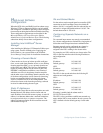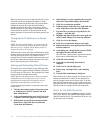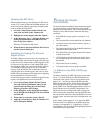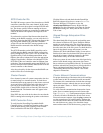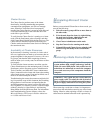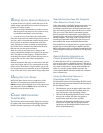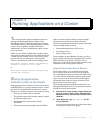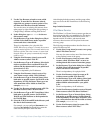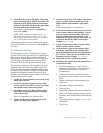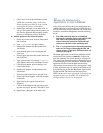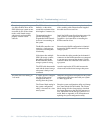
Running Applications on a Cluster 4-1
Chapter 4
Running Applications on a Cluster
T
his section provides general information about con-
figuring and running applications software on the
PowerEdge Cluster. To configure applications software,
click the Start button, point to Programs, point to Admin-
istrative Tools (Common), and then click Cluster
Administrator. In Cluster Administrator, open a connec-
tion to the cluster.
Before you start Cluster Administrator on either cluster
node, make sure the Cluster Service has been started and
a cluster has been formed. You can verify this by using
the Event Viewer and looking for events logged by
ClusSvc. You should see either of the following events:
Microsoft Cluster Server successfully
formed a cluster on this node.
or
Microsoft Cluster Server successfully
joined the cluster.
S
etting Up Applications
Software to Run on the Cluster
Setting up applications software to run on a cluster means
establishing them as a group of cluster resources. Cluster
resources are created using the New Resource wizard.
The process of creating resources involves the following:
•
The type of resource must be specified.
•
The possible owners of the resource must be selected
(the default is both nodes).
•
The dependencies of the resource must be
determined.
•
The resource-specific parameters must be defined.
After a resource has been created, it must be brought
online for access by the cluster nodes and clients.
The following subsections outline the creation and setup
of three example cluster resources:
•
Internet Information Server (IIS) service
•
File-sharing service
•
Print-spooling service
These examples are provided here to instruct you in set-
ting up cluster resources using real applications software.
Refer to the Microsoft Windows NT Cluster Server
Administrator’s Guide for more detailed information and
instructions about creating cluster resources.
Internet Information Server Service
The IIS Virtual Root is one of the Microsoft Cluster
Server resource types that can be used to provide fail-
over capabilities for virtual root directories of IIS version
3.0 or later. The IIS Virtual Root depends on three other
types of resources (disk, Internet Protocol [IP] address,
and network name resources); these resources will be
placed in the same recovery group.
The following example procedure describes how to set
up the IIS Virtual Root service. This procedure assumes
that IIS has already been installed.
1. Start the New Group wizard by right-clicking any
group or resource in the Cluster Administrator,
then point to New, and then select Group from the
submenu.
2. In the dialog box, type Web Service for the
new group name.
You may also want to select one of the cluster nodes
as the preferred owner of the group.



